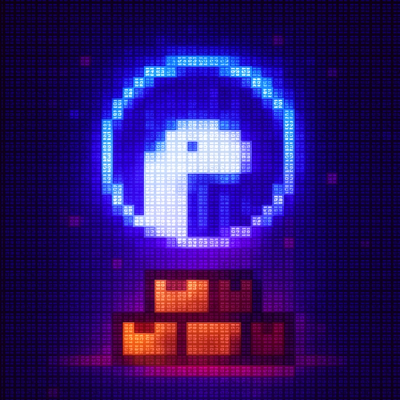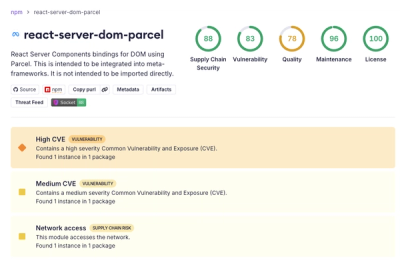
Security News
Deno 2.6 + Socket: Supply Chain Defense In Your CLI
Deno 2.6 introduces deno audit with a new --socket flag that plugs directly into Socket to bring supply chain security checks into the Deno CLI.
json-entity
Advanced tools
This is a simple json database. The package provides a simple ORM between python objects and json objects with a well type-hinted schema.
engine = AppEngine()
async with engine.students as students:
students.add_range(Student("John", "Doe"), Student("Jane", "Doe"))
async for student in engine.students:
print(student.first_name, student.last_name)
# Can you guess ? )
This package maps your python objects to json and then you can save, get, modify or delete them using async methods.
This package is for tiny and simple projects. with a low amount of data.
The package is available at PYPI as json-entity.
Let's see how you can get started with the package.
See also our Wiki.
You can take a look at src/examples, if you're not on reading mode.
This data base consist of 3 main elements:
1- Model
It's obvious that you should have a model for your data to save, update, or ...
Since this library works with json, your model can contain everything
that JSON can.
2- Collection
You have a collection of data for every model, therefor,
The relation between Model and Collection is one to one.
3- Engine
This is where all collections are operate.
So, Every Engine has some Collections where each collection
contains a set of an unique Model.
Models are simple python class.
from sjd import TEntity, Engine, properties as props
@props.auto_collect()
class Person(TEntity):
def __init__(self, first_name: int, last_name: str, age: int):
self.first_name = first_name
self.last_name = last_name
self.age = age
Using auto_collect() method,
the model will automatically collect properties form __init__ method.
It's really not necessary to create a collection by your own! And maybe you better )
Let us do that for ya ( Of course you can create customized Collections ).
Now you need to setup database's engine and define your collections there.
# ---- sniff ----
class AppEngine(Engine):
__db_path__ = "my_database"
persons = Engine.set(Person)
That's all you need to do for now.
Now it's time for some fireworks 🎇.
Since the package is async, you'll need an event loop for it.
import asyncio
# ---- sniff ----
async def main():
...
if __name__ == "__main__":
asyncio.run(main())
Now you can work with database inside main function.
async def main():
engine = AppEngine()
collection = engine.persons
async with collection:
collection.add_range(
Person("John", "Doe", 20),
Person("Jane", "Doe", 21),
Person("Jack", "jones", 22),
Person("Jill", "jones", 23),
)
Iterate over all persons in the collection
async for person in collection:
print(person.first_name, person.last_name, person.age)
You can do more advanced query stuff with queryable context.
async with collection.get_queryable() as persons:
async for person in persons.where(lambda p: p.age > 21):
print(person.first_name, person.last_name, person.age)
Or get only one directly.
target = await collection.get_first_async(lambda s: s.first_name, "John")
You can easily update your data:
async with collection.get_queryable() as persons:
async for person in persons.where(lambda p: p.last_name == "jones"):
person.last_name = "Jones"
await collection.save_changes_async()
Or even delete them ...
async with collection.get_queryable() as persons:
async for person in persons.where(lambda p: p.last_name == "Doe"):
collection.delete(person)
await collection.save_changes_async()
There're a lot more! see src/examples.
FAQs
A simple and async json database.
We found that json-entity demonstrated a healthy version release cadence and project activity because the last version was released less than a year ago. It has 1 open source maintainer collaborating on the project.
Did you know?

Socket for GitHub automatically highlights issues in each pull request and monitors the health of all your open source dependencies. Discover the contents of your packages and block harmful activity before you install or update your dependencies.

Security News
Deno 2.6 introduces deno audit with a new --socket flag that plugs directly into Socket to bring supply chain security checks into the Deno CLI.

Security News
New DoS and source code exposure bugs in React Server Components and Next.js: what’s affected and how to update safely.

Security News
Socket CEO Feross Aboukhadijeh joins Software Engineering Daily to discuss modern software supply chain attacks and rising AI-driven security risks.